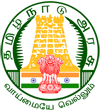Teaching methods can best be defined as the types of
principles and methods used for instruction. There are many types of teaching methods,
depending on what information or skill the teacher is trying to convey. Class
participation, demonstration, recitation, and memorization are some of the teaching
methods being used. When a teacher is deciding on their method, they need to be
flexible and willing to adjust their style according to their students. Student success
in the classroom is largely based on effective teaching methods.
Diversity in Teaching in the Classroom
For effective teaching to take place, a good method must be
adopted by a teacher. A teacher has many options when choosing a style by which to
teach. The teacher may write lesson plans of their own, borrow plans from other
teachers, or search online or within books for lesson plans. When deciding what
teaching method to use, a teacher needs to consider students' background knowledge,
environment, and learning goals. Teachers are aware that students learn in different
ways, but almost all children will respond well to praise.
Students have different ways of absorbing information and
of demonstrating their knowledge. Teachers often use techniques, which cater to
multiple learning styles to help students retain information and strengthen
understanding. A variety of strategies and methods are used to ensure that all students
have equal opportunities to learn.
A teaching method that includes questioning is similar to
testing. A teacher may ask a series of questions to collect information of what
students have learned and what needs to be taught. Testing is another application of
questioning. A teacher tests the student on what was previously taught in order to
identify if a student has learned the material.
Explaining
This form is similar to lecturing. Lecturing is teaching by
giving a discourse on a specific subject that is open to the public, usually given in
the classroom. This can also be associated with modeling. Modeling is used as a visual
aid to learning. Students can visualize an object or problem, then use reasoning and
hypothesizing to determine an answer.
Demonstrating
Demonstrations are done to provide an opportunity to learn
new exploration and visual learning tasks from a different perspective. A teacher may
use experimentation to demonstrate ideas in a science class. A demonstration may be
used in the circumstance of proving conclusively a fact, as by reasoning or showing
evidence.
The use of examples and storytelling likely allows for
better understanding but also greater individual ability to relate to the information
presented. Learning a list of facts provides a detached and impersonal experience while
the same list, containing examples and stories, becomes, potentially, personally
relatable.
Collaborating
Having students work in groups is another way a teacher can
direct a lesson. Collaborating allows students to talk with each other and listen to
all points of view in the discussion. It helps students think in a less personally
biased way. When this lesson plan is carried out, the teacher may be trying to assess
the lesson by looking at the student's: ability to work as a team, leadership skills,
or presentation abilities. It is one of the direct instructional methods.
Learning by Teaching
This method is very effective when done correctly. Having
students teach sections of the class as a group or as individuals is a great way to get
the students to really study out the topic and understand it so as to teach it to their
peers. By having them participate in the teaching process it also builds
self-confidence, self-efficacy, and strengthens students speaking and communication
skills. Students will not only learn their given topic, but they will gain experience
that could be very valuable for life.
The Faculty Development Programme is specially designed for
teachers, researchers and industrial organizations for their management education
requirements. Since the first course that was offered in 1979, the programme has been
continuously modified and restructured to address new developmental needs of management
educators. Faculty development is a similarly used term to staff
development and professional
development, in settings that pertain to educators. Professional development
for educators may include teacher
training, and is usually considered pre-service, or before beginning teaching.
Faculty development and professional development may both
be used to refer to on-going professional learning for educators. Such learning may
take place during work hours. These learning pursuits may be for credit or noncredit,
therefore they may be with a college or university, through a school district, or
private consulting agency. Additionally educators may pursue self-directed
learning. K-12 faculty development and professional development and higher
education faculty development and professional development have very different
traditions, practices and terminologies. Higher education faculty development is
beginning to take place not just face-to-face but also online.



